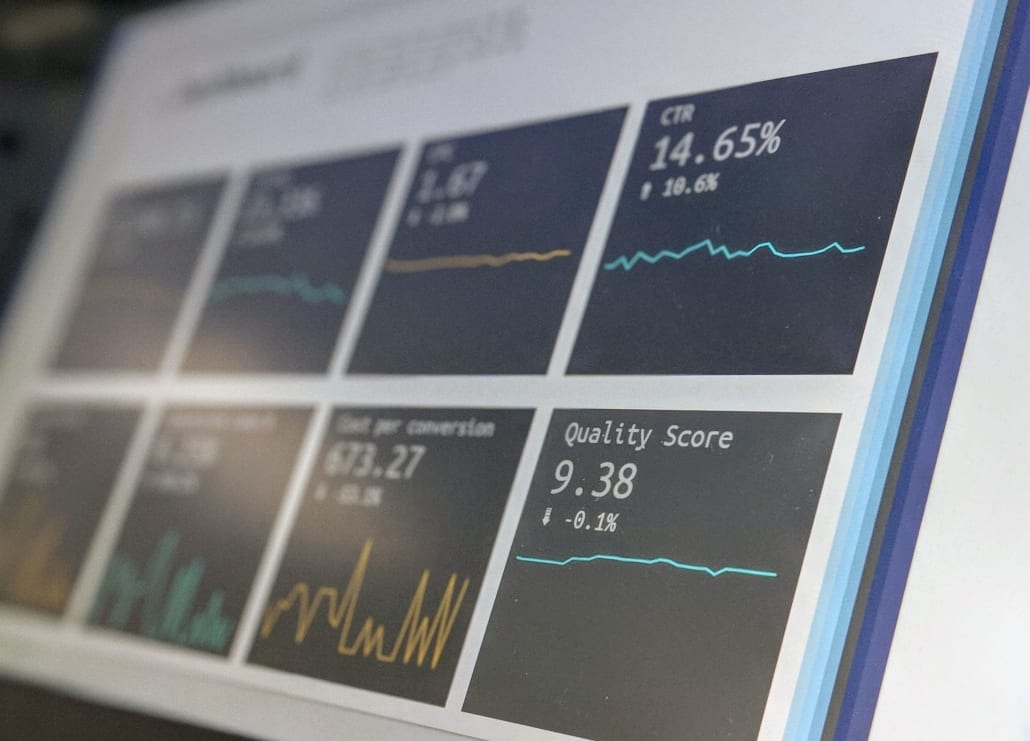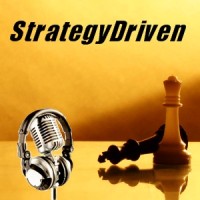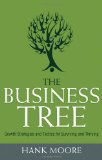How to Use Accurate Data for Strategic Decision-Making
Running your own business involves a lot of decision-making, from figuring out how many employees to hire to when to roll out your next marketing campaign. Rather than make an impulsive decision, successful businesses make informed decisions based on accurate, current information.
This simple strategy of using accurate data can help dictate the health of your business, both short and long-term. To build a resilient and adaptable business, keep reading to learn how to incorporate data-driven insights into your strategic decision-making.
What Is Data-Driven Insights and Digital Asset Management?
In simple terms, data-driven insights refer to any information a company uses to make strategic decisions. Companies develop these insights from basic information and any discernible patterns or trends. The data can include statistics, marketing analysis, consumer information, or any collected facts and data that will help influence strategy to reach your goals.
Without these insights, it’s harder to make informed and targeted decisions.
Digital asset management is the method and strategy of storing and organizing your information. Rather than throwing all your files and data into a computer’s folder, asset management software is designed to keep and secure your data easily.
What kind of data?
The data can include anything from photos and marketing ads to documentation to cryptocurrencies.
Digital Asset Management Platforms
The easiest way to store, analyze, and distribute your digital assets is to use digital asset management (DAM) software. Not only can you store your data, but you can streamline your process to save your team time and money.
Consider these key features when searching for the right DAM software for your business:
- Price: Open-source DAM software is free and a great option for smaller businesses that don’t need many premium features. For larger companies with lots of data to sort, paying for premium software may be a better choice. It all depends on your business needs and goals.
- Security: DAM software ensures you can store your data on one platform rather than share it across multiple channels, like email, Google Drive, or Dropbox. DAM platforms also allow you to set permissions to further control who has access to your information.
- Automation: Whether you need to add watermarks to images or gather customer data from email marketing, you want a DAM platform that allows for customized automation. The less time your team uses to complete tasks manually, the more time you can focus on growing your business.
DAM software comes in all shapes and sizes, making finding the right platform to cater to your specific needs easy. NeverBounce is a software that verifies and cleans your email list. It prevents spam accounts and old email addresses from landing on your list.
ZoomInfo gathers information and profiles for lead generation, potential customers, and talent acquisition. Both platforms assist with strategic planning, lead generation, and reaching the appropriate consumers through data validation—which ultimately helps grow your business.
Another software, Kubera, tracks your investments and finances. By consolidating your financial data and assets into one platform, you can easily monitor stocks, bank accounts, and your portfolio in one place. Routinely tracking your finances, with the ability to look at your past and present net worth, helps build a robust operational strategy to allow you to meet and exceed your goals.
Benefits of Using Accurate Data for Your Business
According to KPMG, 73% of organizations rely on accurate data for strategic decision-making in at least one business area. Email verification and sales solutions (addressing the customer’s pain points), in particular, are two areas that directly rely on gathering consumer information.
Here are a few benefits of using accurate data in your business:
Make Informed Decisions
Accurate data, by definition, is factual and reflects a source of truth.
Sales solutions, for example, focus on the consumer’s pain points to fashion a solution for them. Teams can take the data from a survey or poll to make informed decisions on future products or services built around solving that specific problem. Knowing your information is accurate can also boost your company’s confidence in making these decisions to support your goal further.
Identify Potential Risks
Wherever finances are concerned, there is always potential for risks.
Using software like Kubera, which specializes in helping you track your net worth and investments, allows you to see the bigger picture of your portfolio. Closely monitoring your finances (with frequently updated information) reduces the chances of bad investment decisions that could negatively impact your financial future.
Address Challenges Effectively
In some cases, time is of the essence.
Data and trends have the potential to change within a short period, meaning what was once relevant information in January may be irrelevant in June. Collecting accurate data is crucial to addressing challenges and consumer pain points effectively and efficiently.
Ultimately, you want the information, product, or service you provide to your audience to be relevant; otherwise, consumers won’t find it useful.
How to Leverage Data-Driven Insights
Over time, the landscape of your industry will change.
Technological advancements and the swing of the economy can directly impact your business operations. To overcome these obstacles, you should create a robust business model with strategies to help adapt to these changes.
You also want to work through ways to continue to scale and grow your business. Leveraging data-driven insights that influence strategic decision-making can help you build an adaptable business.
Let’s examine a few ways to leverage your data-driven insights:
Data Management
At its core, the primary purpose of collecting data is to better organize and manage your information.
Making your data easily accessible – and easy to analyze – helps your team to make data-driven decisions. From there, you can address pain points, troubleshoot areas you fall short of, and develop a plan to support your business and customers.
You can also spot trends and patterns in your data and use that information to anticipate a shift in the industry.
Risk Assessment
As quickly as you may want to grow your business, choosing how and when is a strategy in itself. You don’t want to grow too fast and risk damaging the health of your business. For instance, hiring too many employees or making multiple investments at the wrong time may be a costly mistake. By studying data-driven insights, you can assess the state of your business and prepare for growth at the best time rather than mindlessly making decisions.
Diversified Investments
Much like growing too fast, your investment decisions can have a huge impact on the future of your business. As mentioned earlier, managing your finances through software like Kubera provides a clear picture of how much money you have, where it sits, and how you can invest or leverage it.
These diversified investments are especially useful if and when the economy shifts. Creating a financial safety net through diversified investments and informed decisions can protect you in case of an emergency.
Long-Term Strategic Planning
According to the U.S. Bureau of Labor Statistics, 20% of new businesses fail within their first year.
The most common reason is a lack of financial discipline, investors, or poor investments. It’s important to make data-based decisions that stabilize your finances to prevent this from happening to your business.
Beyond that, every aspect of your business can benefit from data-driven insights to support your goals. You can only achieve longevity in business by making smart decisions, and that happens through strategic planning based on accurate data.
Final Thoughts
Using data-driven insights gives your business accurate data that can help influence strategic decision-making. Collecting and managing your data is as simple as utilizing DAM software like Kubera and ZoomInfo to help organize your digital assets.
By leveraging this information, your business will continue to grow at an appropriate pace, anticipate trends in the market and industry, as well as plan for the future of your organization.


 Dr. Rhian Silvestro is Associate Professor of Operations Management at Warwick Business School. Rhian has conducted service management research in a number of large, leading edge organisations including retail companies, banks, transport companies, health services and call centres. She has publications in over ten international journals in the fields of service design, performance improvement and supply chain integration.
Dr. Rhian Silvestro is Associate Professor of Operations Management at Warwick Business School. Rhian has conducted service management research in a number of large, leading edge organisations including retail companies, banks, transport companies, health services and call centres. She has publications in over ten international journals in the fields of service design, performance improvement and supply chain integration. Speaking two languages makes you bilingual, and speaking three makes you trilingual. Any more than that, and you are a polyglot. In today’s data-driven business world, you are a data scientist if you can “speak data”.
Speaking two languages makes you bilingual, and speaking three makes you trilingual. Any more than that, and you are a polyglot. In today’s data-driven business world, you are a data scientist if you can “speak data”. Power Stars to Light the Business Flame, by Hank Moore, encompasses a full-scope business perspective, invaluable for the corporate and small business markets. It is a compendium book, containing quotes and extrapolations into business culture, arranged in 76 business categories.
Power Stars to Light the Business Flame, by Hank Moore, encompasses a full-scope business perspective, invaluable for the corporate and small business markets. It is a compendium book, containing quotes and extrapolations into business culture, arranged in 76 business categories. StrategyDriven Podcasts focus on the tools and techniques executives and managers can use to improve their organization’s alignment and accountability to ultimately achieve superior results. These podcasts elaborate on the best practice and warning flag articles on the StrategyDriven website.
StrategyDriven Podcasts focus on the tools and techniques executives and managers can use to improve their organization’s alignment and accountability to ultimately achieve superior results. These podcasts elaborate on the best practice and warning flag articles on the StrategyDriven website.
